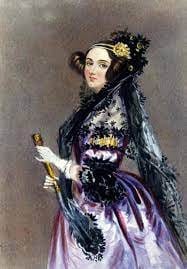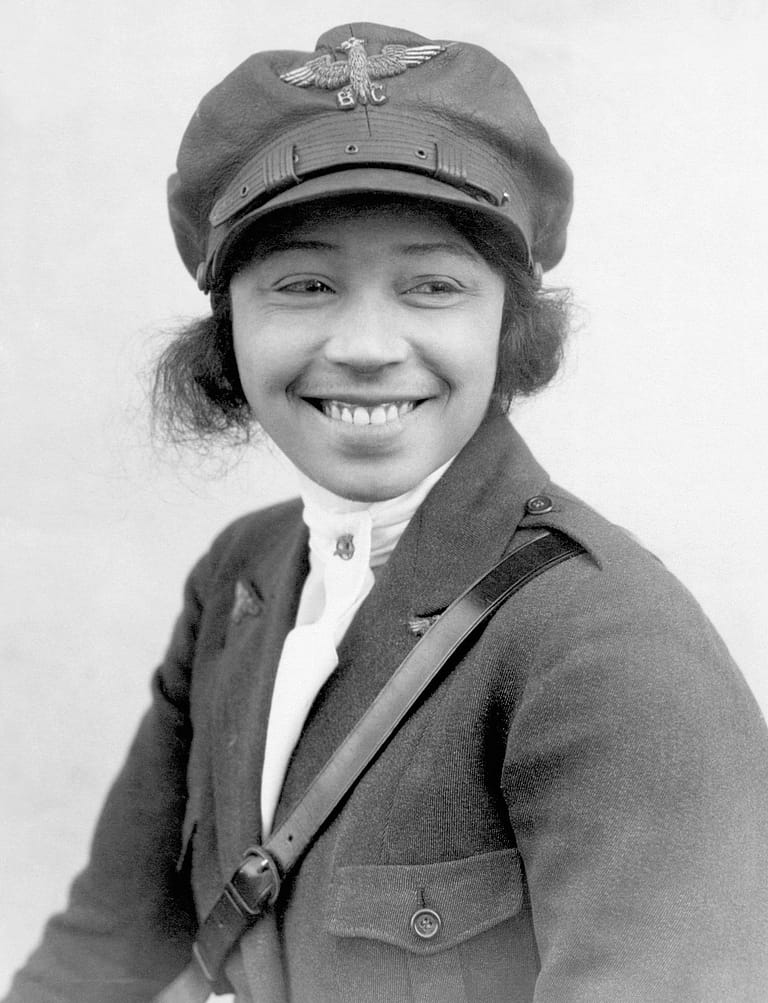Throughout history, countless women have made significant contributions to their fields, society, and the world at large, often without receiving the recognition they deserve. From pioneers in science, technology, and medicine to trailblazers in activism, literature, and the arts, these women broke barriers and paved the way for future generations. Their stories, marked by determination, intellect, and courage, serve as an inspiration to all.
Ada Lovelace (1815–1852)

Often celebrated as the first computer programmer, Ada Lovelace was an English mathematician and writer. She is best known for her work on Charles Babbage’s proposed mechanical general-purpose computer, the Analytical Engine. Lovelace’s notes on the engine include what is recognized as the first algorithm intended to be processed by a machine. Her contributions laid the groundwork for the future of computing, highlighting her foresight in envisioning the potential of computers beyond mere calculation.
Rosalind Franklin (1920–1958)

An English chemist and X-ray crystallographer, Rosalind Franklin made critical contributions to the understanding of the molecular structures of DNA, RNA, viruses, coal, and graphite. Her work on X-ray diffraction images of DNA, particularly Photo 51, led to the identification of DNA’s double helix structure by Watson and Crick. Despite her pivotal role, Franklin’s contributions were largely recognized posthumously, highlighting the gender biases in science at the time.
Grace Hopper (1906–1992)

Rear Admiral Grace Hopper was an American computer scientist and United States Navy officer. A pioneer in the field, she was one of the first programmers of the Harvard Mark I computer and developed the first compiler for a computer programming language. Hopper’s work conceptualizing the idea of machine-independent programming languages led to the development of COBOL, one of the first high-level programming languages. She is also known for popularizing the term “debugging” for fixing computer glitches.
Sophie Scholl (1921–1943)

A German student and anti-Nazi political activist, Sophie Scholl was a core member of the White Rose, a non-violent resistance group to Hitler and the Nazi regime. Scholl and other members were arrested for distributing anti-war leaflets at the University of Munich in 1943. She was convicted of treason and executed by guillotine. Scholl’s courage and conviction have made her an enduring symbol of the fight against tyranny and oppression, inspiring future generations to stand up for justice and freedom.
Wang Zhenyi (1768–1797)
A pioneering Chinese female astronomer, mathematician, and poet of the Qing Dynasty, Wang Zhenyi broke traditional gender barriers to excel in fields dominated by men. She made significant contributions to astronomy, accurately predicting lunar eclipses and explaining complex celestial phenomena in terms understandable to the public. Wang also advanced the study of mathematics, writing educational books and essays that challenged Confucian norms regarding women’s education and capabilities.
Mary Anning (1799–1847)
An English fossil collector, dealer, and paleontologist, Mary Anning’s discoveries in the Jurassic marine fossil beds at Lyme Regis in Dorset became key pieces of evidence for extinction and evolutionary theory. Anning discovered the first correctly identified ichthyosaur skeleton and the first two plesiosaur skeletons ever found, among other significant paleontological contributions. Despite her lack of formal scientific training and the barriers faced by women in science during her time, Anning’s work had a profound impact on the development of geology and paleontology.
Bessie Coleman (1892–1926)

Bessie Coleman was the first African American woman and the first Native American to hold a pilot license. Overcoming racial and gender biases, Coleman traveled to France to earn her aviation license in 1921. Upon returning to the United States, she became a successful air show pilot known for her daring aerial stunts. Coleman’s legacy inspires efforts to increase diversity in aviation.
Noor Inayat Khan (1914–1944)

A British spy of Indian and American descent, Noor Inayat Khan served as a wireless operator in Nazi-occupied France during World War II for the Special Operations Executive (SOE). Known for her bravery and dedication, Khan was the first female radio operator sent into occupied France to aid the French Resistance. She was eventually captured, interrogated, and executed by the Gestapo. Khan was posthumously awarded the George Cross for her extraordinary valor and sacrifice.
Ynes Mexia (1870–1938)

A Mexican-American botanist known for her extensive plant collections from areas of Central and South America, Ynes Mexia began her botanical career in her fifties. Over a span of 13 years, she collected over 145,000 specimens, discovering 500 new species and several new genera. Her contributions significantly enriched the botanical understanding of numerous remote regions and underscored the importance of fieldwork in botany, showcasing her remarkable resilience and passion for plant science.
Gerty Cori (1896–1957)

Czech-American biochemist Gerty Cori was the first woman to win the Nobel Prize in Physiology or Medicine in 1947, shared with her husband Carl Cori and physiologist Bernardo Houssay, for their discovery of the course of the catalytic conversion of glycogen. Her work laid an important foundation for understanding the biochemical processes of living cells and contributed to the development of treatments for diabetes and other metabolic diseases. Cori’s achievements paved the way for future generations of women in science, demonstrating the critical role of women in advancing medical and biochemical research.
Chien-Shiung Wu (1912–1997)

Chien-Shiung Wu was a Chinese-American experimental physicist who made significant contributions in the field of nuclear physics. Wu worked on the Manhattan Project, where she helped develop the process for separating uranium metal into uranium-235 and uranium-238 isotopes by gaseous diffusion. She is best known for conducting the Wu experiment, which contradicted the law of conservation of parity, proving that the weak force is not invariant under parity. Her work earned her the nickname “First Lady of Physics,” though she did not receive the Nobel Prize, which went to her male colleagues.
Wangari Maathai (1940–2011)

A Kenyan environmental political activist and Nobel Peace Prize laureate, Wangari Maathai founded the Green Belt Movement, an environmental non-governmental organization focused on the planting of trees, environmental conservation, and women’s rights. Through her efforts, Maathai contributed to the planting of over 30 million trees across Africa to combat deforestation and prevent soil erosion. Her work emphasized the interconnectedness of sustainable development, democracy, and peace, making her the first African woman to receive the Nobel Peace Prize in 2004.
Hedy Lamarr (1914–2000)

An Austrian-American actress and inventor, Hedy Lamarr was not only celebrated for her film career but also for her contribution to technology. She co-invented an early version of frequency-hopping spread spectrum communication, initially intended to help defeat the Axis powers in World War II by preventing the interception of radio-guided torpedoes. Although her invention was not adopted by the military until later, it laid the foundational principles for modern Bluetooth, Wi-Fi, and CDMA technology. Lamarr’s dual legacy in Hollywood and science exemplifies her remarkable versatility and ingenuity.
Nellie Bly (1864–1922)
Born Elizabeth Cochran Seaman, Nellie Bly was an American journalist, industrialist, inventor, and charity worker who was widely known for her record-breaking trip around the world in 72 days, in emulation of Jules Verne’s fictional character Phileas Fogg, and an exposé in which she worked undercover to report on a mental institution from within. Her investigative journalism paved the way for new forms of immersive reporting.
Alice Ball (1892–1916)

An African American chemist, Alice Ball developed the first successful treatment for leprosy during the early 20th century. Her method, known as the “Ball Method,” involved isolating the active compounds in the oil of the chaulmoogra tree, creating an injectable form that was used effectively for many years to treat leprosy patients. Ball’s groundbreaking work was recognized posthumously, as her early death at 24 prevented her from receiving due credit during her lifetime.
Murasaki Shikibu (c. 973–c. 1025)
A Japanese novelist, poet, and lady-in-waiting at the Imperial court during the Heian period, Murasaki Shikibu is best known as the author of The Tale of Genji, considered the world’s first novel. Written in the early 11th century, her work provides a vivid depiction of the aristocratic society of the time and marks a significant milestone in the development of Japanese literature.
Gertrude Bell (1868–1926)

An English writer, traveler, political officer, administrator, and archaeologist who played a significant role in establishing the modern state boundaries in the Middle East after World War I. Bell’s extensive travels and knowledge of the region made her a crucial player in British imperial policy-making. She was instrumental in the founding of the state of Iraq and the establishment of its National Museum.

